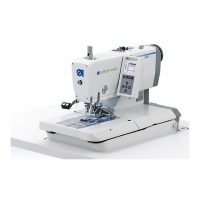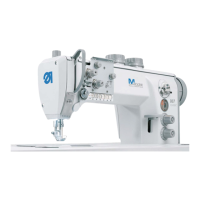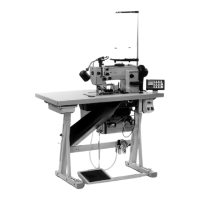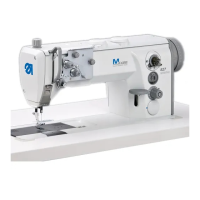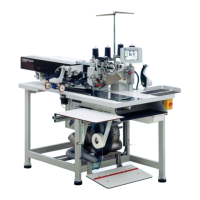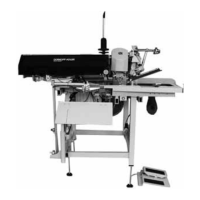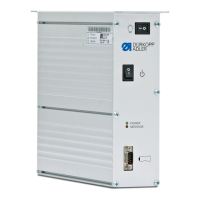Error description Possible cause Remedy
Skipped stitches The material is not spread or
spread too little.
Check the spreading
(see chapter “Spreading”).
The matching needle size has
to be chosen according to the
material, the material thickness
and the thread used.
Change the needle size.
(See Operating Instructions)
Attention!
After changing the needle size the
distance needle-looper has to be
checked.
Throat plate, loopers or
spreaders have possibly been
damaged by the needle.
Have the parts reworked by the
service personnel.
Possibly parts have been
inserted which do not match the
sewing equipment, as e.g.
throat plate, looper, spreader,
clamping plates, upper/lower
fabric clamps.
Check the sewing equipment parts
according to the equipment sheet.
When converting the seam
width the loop stroke has not
been readjusted.
Adjust the loop stroke
(see chapter “Loop stroke”).
Looper or spreader are
adjusted wrongly.
Even if no wrong adjustment is
to be seen and the
above-mentioned measures did
not lead to an improvement,
check the points opposite once
again.
Check the adjustments described
in the following chapters of the
Service Instructions:
“Adjusting the locking positions”
“Adjusting the loop stroke”
“Needle bar height”
“Distance between looper and
needle”
“Needle protection”
“Spreader”
“Spreader plate”
“Throat plate”
“Rotary thread take-up disc”
Thread breakage Needle and looper thread are
threaded incorrectly.
Check threading of needle and looper
thread (see Operating Instructions
“Thread the needle thread”/ “Thread
the looper thread”)
The needle is bent,
sharp-edged or incorrectly
inserted in the needle bar.
Insert a new needle. Insert the
needle in the needle bar correctly.
The thread used is knotty, hard
or too thick and thus unsuitable.
Use recommended threads only
(see Operating Instructions:
Needles, threads and gimps).
The thread tensions are too
tight for the thread used.
Check the thread tensions
(see Operating Instructions “Thread
tensions”)
3
113
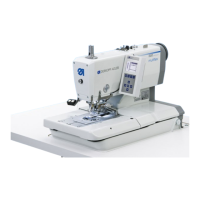
